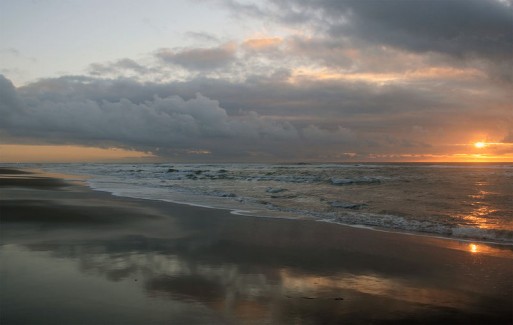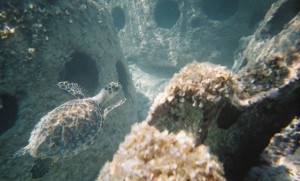From pyramids to space burial, technology informs the rituals by which we memorialize our losses. Now we can do so while simultaneously restoring fragile, diminishing ecosystems. Imagine literally turning death into vibrant, dense sea life with layers of coral and schools of fish. Eternal Reefs (check out our interview with their founder) provides this form of sea burial. Does this signify a cultural shift towards greater ecological awareness? If so, it’s high time, what with the record-breaking drought in California, the dwindling Colorado River, or the massive ice storms sweeping across the South. By combining the future of the natural world with your end of life, you can advance a cultural phenomenon vital to the existence of culture itself. This type of sea burial symbolizes a sharper focus on the suffering ecosystems that we must remember as kin, not enemy—as sacred, not subordinate.
Whereas a more typical sea burial ceremonially scatters ashes into the sea, Eternal Reefs blends cremated remains of a loved one into “reef balls”. These then rebuild vital ocean habitats. Built from eco-friendly concrete and designed to create whirlpools necessary to foster harbor life, they should hopefully assuage most qualms related to well-intentioned but misinformed artificial reef-building technologies. Eternal Reefs has planted over 700,000 reef balls worldwide.
Perhaps if you think of the natural world as you think of your end of life future, then you may help advance a cultural phenomenon vital to the existence of culture itself.
The memorial involves a 4-day process for the loved one’s family and friends. On the first day, those who attend write messages or leave prints in the concrete, thereby personalizing this liveliest of memorials with a part of themselves. Next, on “family fun day,” the reef is prepared. On the third day, loved ones view the reef and plaque inscribed with a memorial message. Then, ending with a last embarkment, they watch the reef enter its final resting place on the ocean floor.
Some variations make room for other personal preferences. Pets may be interred with owners; couples may be bound together in the same reef. Several designs attract slightly different forms of sea life: the largest option, the Mariner Memorial Reef, resembles a pinnacle in the reef, drawing larger species, whereas the smallest, the Aquarius, houses the more minute and nimble of aquatic species. A practice undergirded by science, reef burial welcomes one’s own religious affiliations to adorn the process. It is flexible, accommodating and responsive to metaphor and ceremony.
Whereas a more typical sea burial ceremonially scatters ashes into the sea, Eternal Reefs blends cremated remains of a loved one into “reef balls”. These then rebuild vital ocean habitats.
To speak of a place for the divine in this practice, one recalls the Jungian idea of the psychological necessity for myth and ritual. One wonders if reef burial satisfies a particular human desire rooted in the subconscious. If by space burial we imagine our return to the stars, by reef burial we repose within a more intimate mother, from whom all earthy life was born. The maternal sea flows through both art and science, the two streams of our psyche. Red snapper, grouper, clownfish—we can reenter that first watery world, no matter what system of knowledge we see it through.
Check out this video of a reef one year after its placement:
More from SevenPonds:
- Options for Green Burial
- What is Natural Death Care and Green Burial? An Interview with Shari Wolf
- New Egyptian Tombs in Valley of the Kings?

 Restoring Coral Reefs through Sea Burial
Restoring Coral Reefs through Sea Burial





 “As Tears Go By” by Marianne Faithfull
“As Tears Go By” by Marianne Faithfull

 Funeral Favors Offer Visitors a Tangible Memento
Funeral Favors Offer Visitors a Tangible Memento















